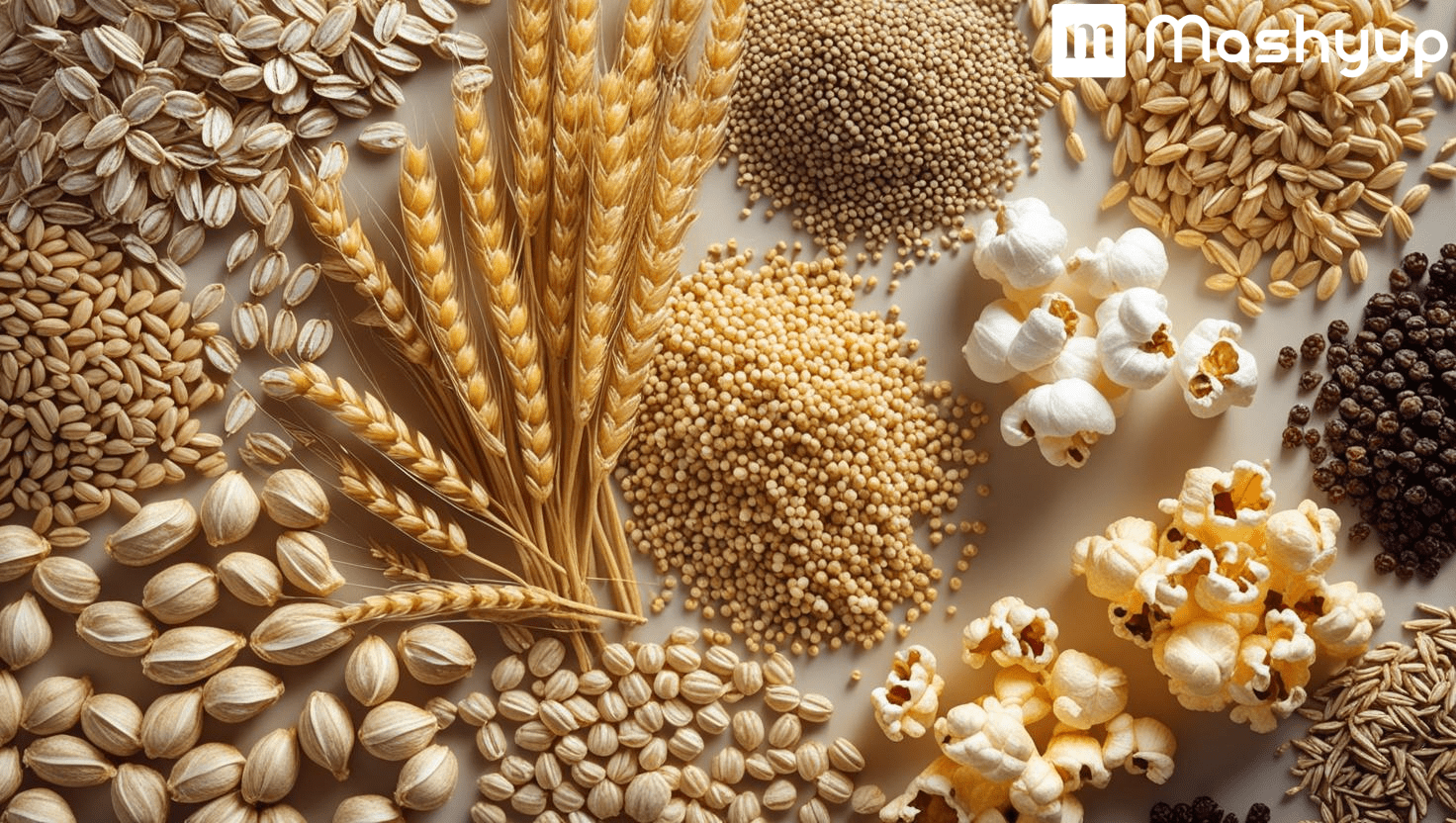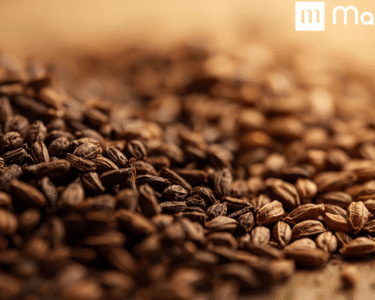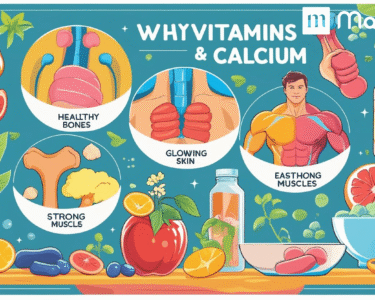Whole grains are popular for all the good reasons, they often take the center stage when talking about healthy food items to consume. Whole grains have a “ Whole “ keyword in its name itself, and hence offers a whole pack of nutrients containing fiber, vitamins, minerals and plant compounds. These wholesome grains offers huge benefits to heart, digestion and overall well being.
What are Whole Grains ?
Understanding what whole grains actually are, whole grains are the grains that contain all three parts of the kernel. Grains do not lose any of their natural component during processing. This kernel has bran, germ, and endosperm intact in it, unlike refined grains, where the bran and germ are removed. To understand this better, let’s break down whole grains into three parts:
- Bran : The outer most layer of the grains which is rich in fiber, B vitamins and antioxidants.
- Germs : Unlike their name, these germs are nutrient rich with their core containing healthy fats, vitamins and proteins.
- Endosperm: This is the middle layer, which is full of carbohydrates and proteins as well.
Whole grains are extra nutritious as they keep their original structure intact. On the other hand, refined grains lose most of these nutrients during the milling process.
Some common examples of whole grain foods include brown rice, oats, whole wheat, quinoa, barley, and millet.
Why Whole Grains are Essential ?
Whole grains are not just sources of carbohydrates; they are jam packed with a bundle of health benefits. Here’s how you should include them in your everyday meals:
- Improves Heart health: The fiber, antioxidants and plan compounds present in whole grains help in reducing the bad cholesterol in the body while pave way for the good ones. Because of its high nutritional value, they can also lower the risk of heart diseases.
- Nutrient Boost : Whole grains are extremely rich in vital minerals like magnesium, iron, zinc, B vitamins, and essential fatty acids.
- Weight Management : Whole grains help in keeping you full for long, which reduces your hunger pangs and helps in your weight management.
- Better blood sugar control : Whole grains have a very low glycemic index as compared to refined grains, making them ideal for people suffering from diabetes.
- Improves Digestion : The high fiber content in whole grains makes them easy to digest while preventing any kind of constipation. It also helps in keeping your gut healthy.
Types of Whole Grains and How to Consume Them
They are a wide variety of whole grains to choose from, with each of the grains having its own taste and texture. Some of the most popular ones that can be added to your diet include:
Brown Rice
Brown rice is a very popular rice type where only the outer husk is removed. Because of less processing, the bran and the germs remains intact here which makes them full of fiber, nutty and chewy as well.
How you can consume them:
- You can replace white rice with brown rice in your everyday meals.
- Make a healthy fried rice with vegetables.
- Use brown rice for stir fries, rice bowls, and with curries.
Oats
Oats are a powerhouse of beta glucan fiber type. Oats are popular for improving overall heart health while also lowering the cholesterol in the body.
How to consume :
- You can grind oats in a blender and use its flour in pancakes, muffins or other bakery items.
- Add oats to make healthy and fulfilling smoothies.
- Make yourself an oatmeal for breakfast, topped with your favorite fruits and nuts.
Barley
Barley is slightly chewy in texture and hence, is extremely rich in fiber and minerals.
How to consume them:
- Simply add barley to your regular soup bowls or stews for good consistency.
- Make barley salad with herbs and vegetables.
- Make a barley water drink to feel refreshed this summer.
Quinoa
Quinoa is technically seeds which also falls under the category of whole grain because of the high nutritional profile. Quinoa is also gluten free and protein high which makes them popular among people who are health conscious or have gluten allergy.
How to consume :
- Mix quinoa into soups or stews for that extra dose of protein in it.
- Use quinoa instead of rice with curries.
- Make quinoa breakfast bowls with berries and honey.
Whole Wheat
The most common type of grain is the whole wheat, which is widely used to make flour for bread, chapatis, pasta and baked goods.
How to consume :
- Make rotis/ chapati to be consumed with Indian curries.
- Swap white bread with 100% whole wheat bread.
- Use whole wheat pasta for a healthier dinner.
Millets
Millets are another super nutritious whole grains that comes in a group of small seeded grasses that are gluten free and nutrient dense.
Ways to consume millets:
- Use millet flour to make roti or pancakes
- Add crunch to your salads through millets.
- You can also make millet porridge.
Popcorn
Yes, it may be surprising, but popcorn is a grain too. Just skip the extra butter and the sugar in it and it can be an healthy whole grain snack.
How to consume ?
- Go for a healthy swap: eat popcorn instead of chips.
- Air pop popcorns and eat them with herbs and spices.
Rye
Rye is often used in breads and has a deep earthy flavor.
How to consume ?
- Have a nutritional lunch with Rye bread sandwiches.
- You can use rye flour in baking as well; it will give your baked items a good texture.
- Mix rye grains into salads.
Make Whole Grains a Daily Habit
The first step to adopting a healthier lifestyle is learning what a whole grain is, what kinds of whole grains are available, and how to eat them. The options are numerous, ranging from substantial whole wheat bread to airy quinoa salads. With the power of whole grains, you can experience greater heart health, stronger immunity, and better digestion by experimenting with recipes and making minor changes.






